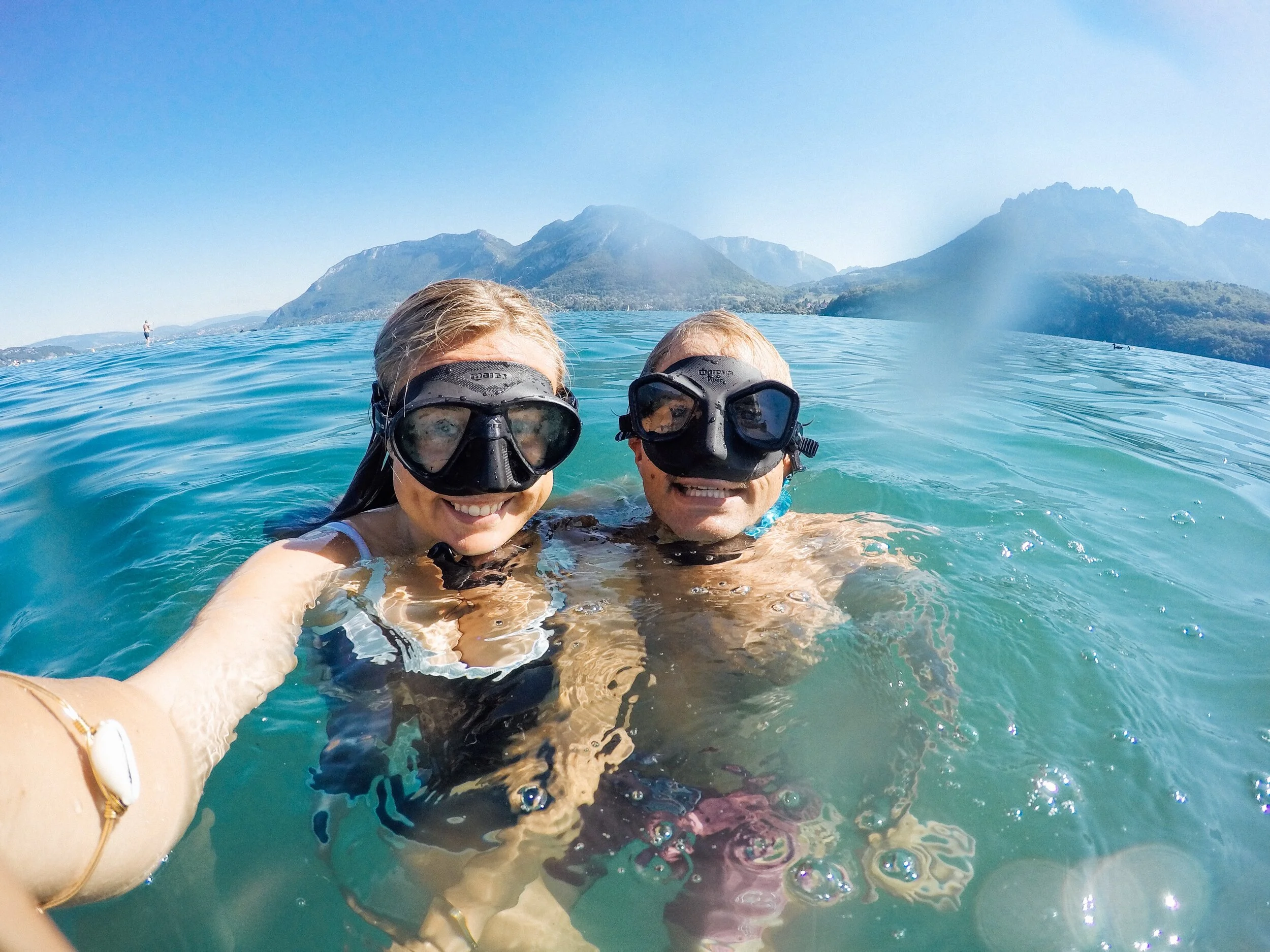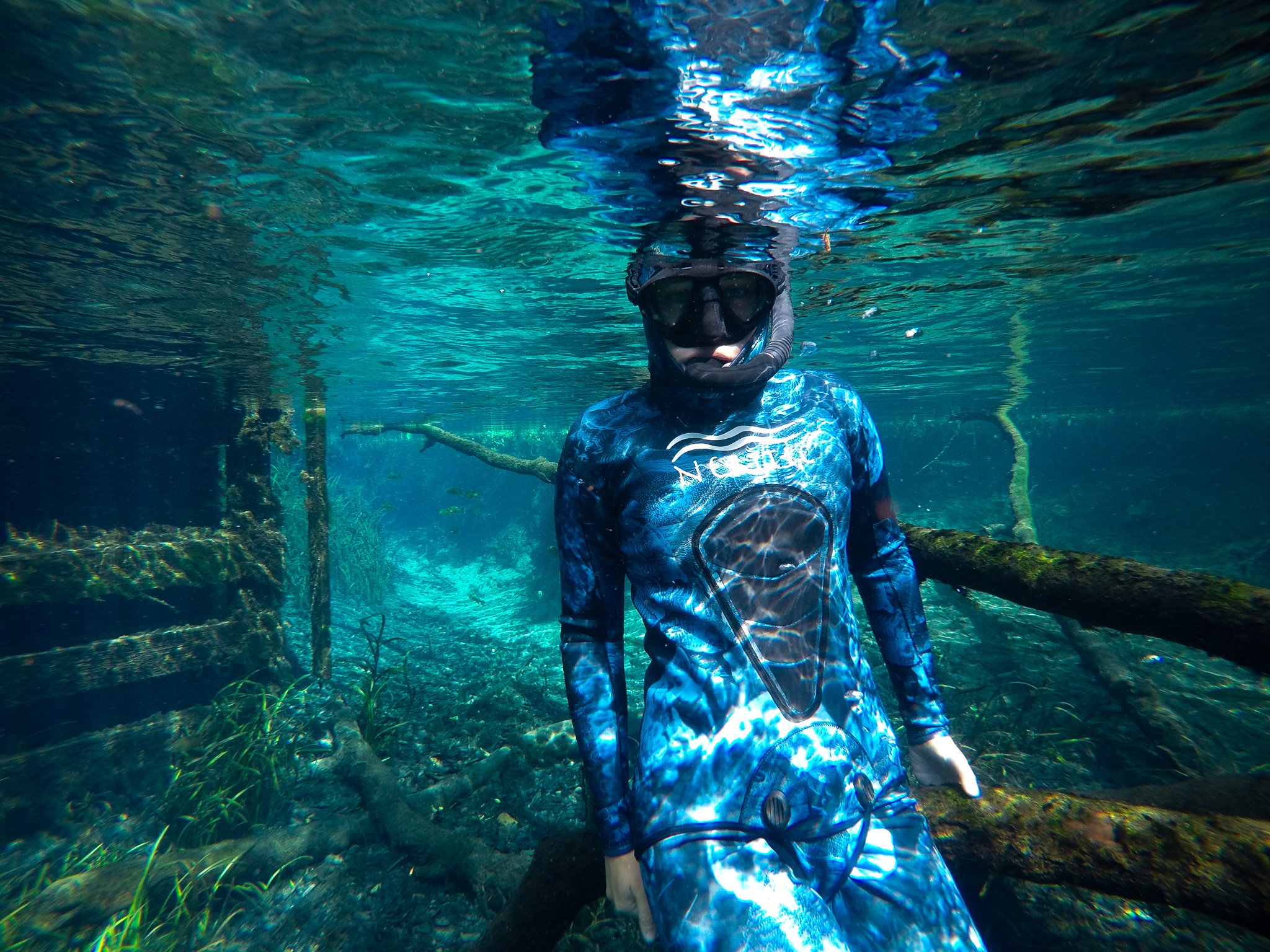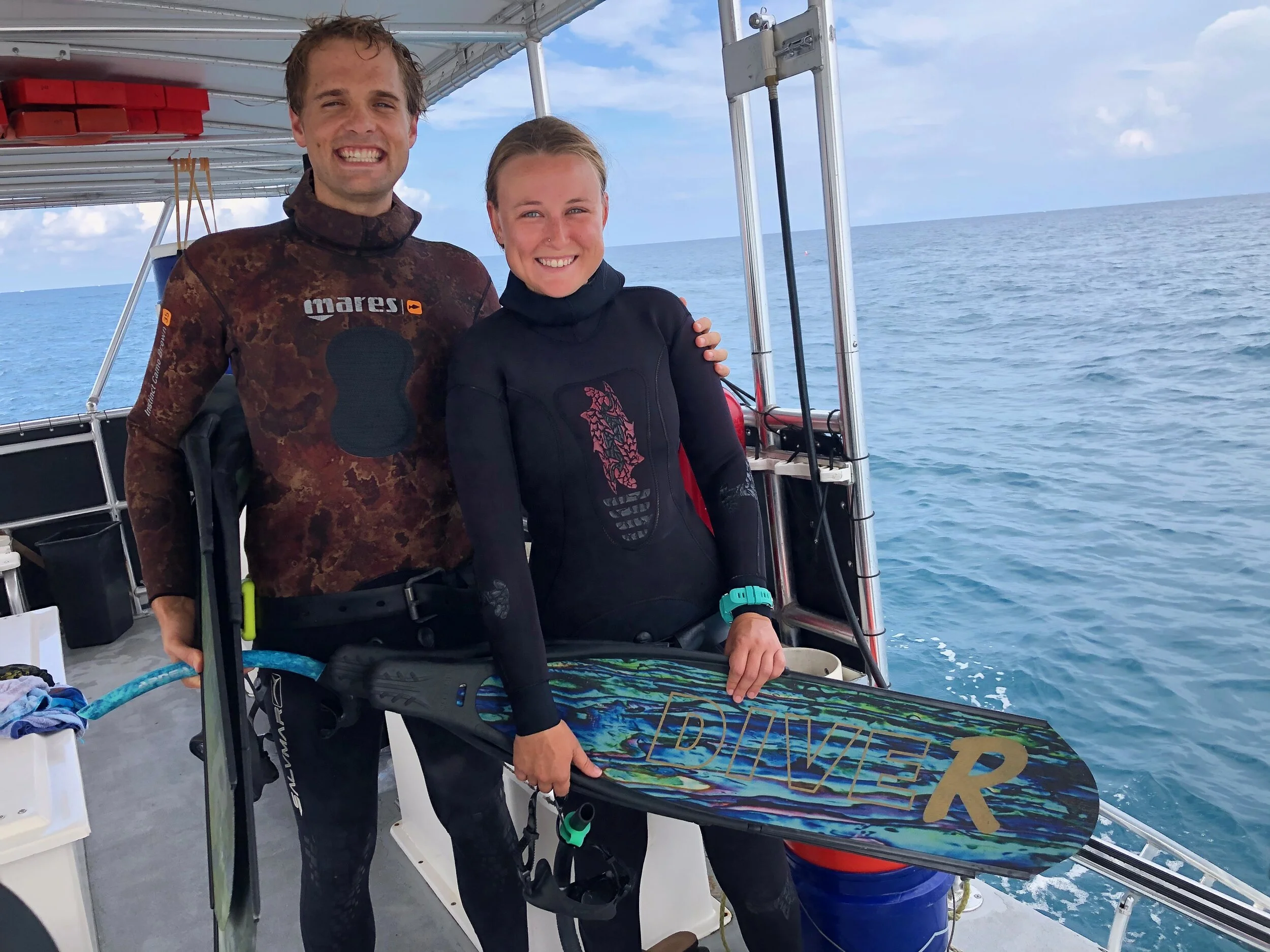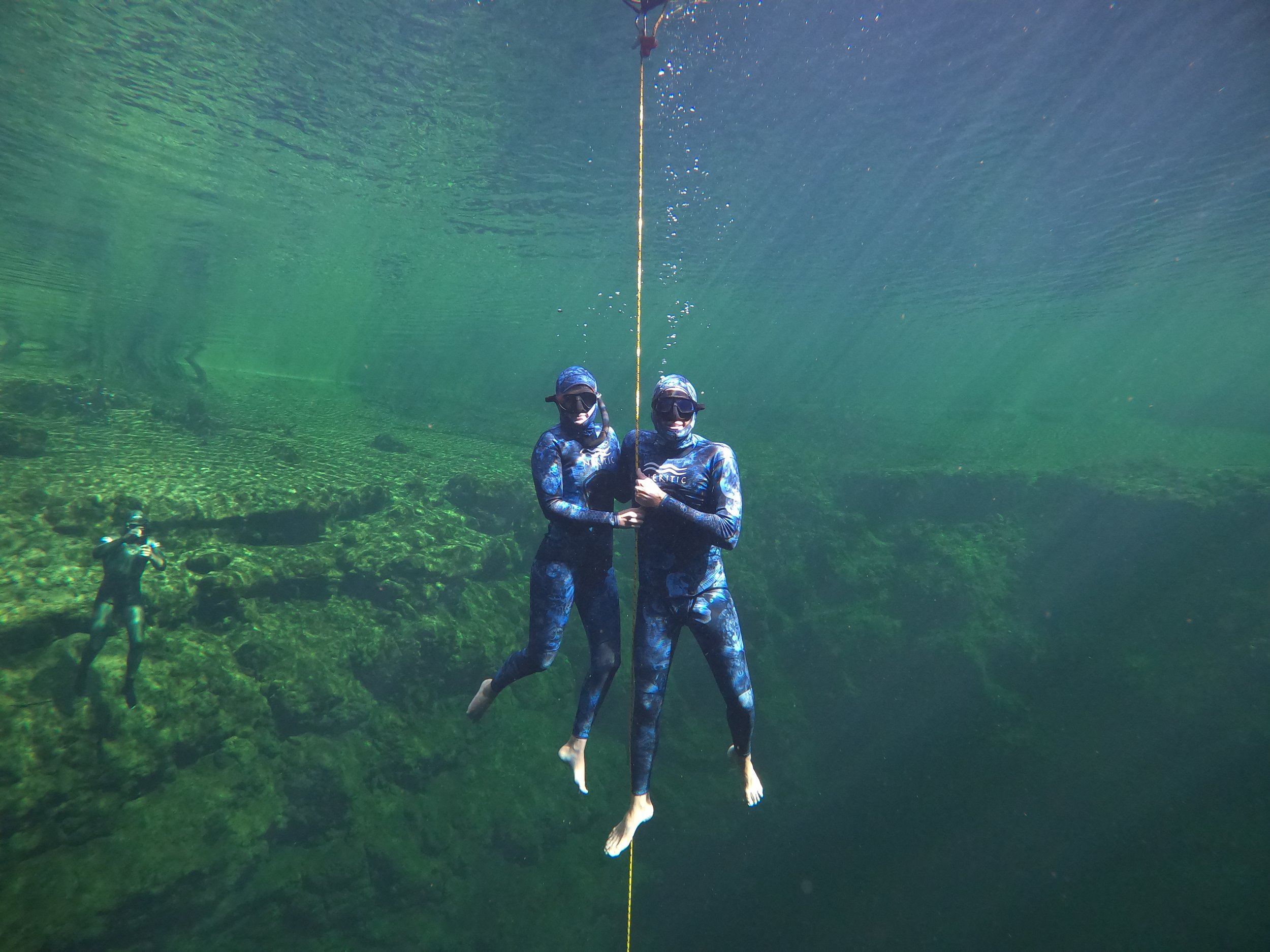What Gear do I Need to Start Freediving?

This blog details what gear is needed to start your Freediving journey and includes our preferred gear should you wish to start shopping.
What Gear do I Need to Start Freediving?

Freediving is an amazing sport for so many reasons, one being that it is incredibly minimalistic in nature. Before modern times, humans have been Freediving for thousands of years without any equipment! Contrast that with SCUBA diving where it’s necessary to use bulky equipment such as buoyancy compensator device, regulator, tanks and more!
Mask
The most important feature in deciding which mask to buy is whether or not it’s a good fit for your face. Having a mask that specifically fits your face will make your dive more comfortable and enjoyable. Every face is different, so it’s helpful to visit your local dive shop to try masks on before purchasing. Press the mask against your face and inhale slightly, make sure there are no gaps or areas of intense pressure. If it’s a good fit, the mask will stay on your face. Try to look for a mask that has a soft silicone skirt. The soft silicone is more flexible and forms a better seal around your face.
We personally love the Mares Viper Mask (pictured on Farrell) and the Mares X Free Mask (pictured on Keke). Farrell likes the Viper mask because it’s very comfortable, has a great seal, and doesn’t press on your forehead unlike a lot of masks on the market! Keke likes the X Free because the silicone an extremely soft and pliable material which holds the suction well, makes it easy to pinch the nose to equalize, and is very comfortable.
Another characteristic of a good Freediving mask is one that has a low volume. In a Freediving course you will learn that pressure from dives compressed gas, so the air in the mask gets squeezed, pressing it against your face until you equalize air into the mask, balancing the pressure. While a bulky SCUBA mask will work, a slimmer and sleeker Freediving mask is ideal.
The Aqualung Sphera X mask is a great low volume mask.
Snorkel
Whether or not you need a snorkel depends on the type of Freediving you’ll be doing. For more exploratory diving such as photography, Spearfishing or general sightseeing, it’s helpful to have a snorkel to breathe up and survey where you are in relation to the reef or wreck and observe any marine life that may be in the area. If you are training for depth and not concerned with the external environment, a snorkel is a hindrance as it increases drag, causing higher oxygen consumption during your dive.
The type of snorkel will also depend on the diving you are doing. Freedivers typically prefer a simple J snorkel that is soft rubber (so that it presses gently against your head.) The Cressi Corsica is a great option for satarters. For open ocean dives where waves are present, a longer snorkel may be necessary to avoid water entering into the snorkel. Rubber snorkel keepers or a mask strap can be used to attach the snorkel to a mask.
Fins
While shorter SCUBA and snorkeling fins will work, long blade fins are preferred by Freedivers. This allows us to displace more water per kick, giving us the ability to cover more distance using less time and energy. There are three types of long blade fins typically used in Freediving; plastic, fiberglass, and carbon fiber. Plastic is the most durable and least costly, while carbon fiber is the most expensive and least durable but provides for the best performance while fiberglass provides a happy medium between the two.
When we’re training in the pool or lobstering, we like to use Hammerhead Kaudal fins
Carbon Fiber fins are highly sought after as they are the lightest and most responsive (bendy) type of fins. Carbon Fiber allows for maximum output with minimal effort, making us a more efficient Freediver.
Wetsuit
Wetsuits provide Freedivers protection from elements such as sun, cold, stinging nettles and corals and more. They also offer added buoyancy, a helpful trait in freshwater or other areas where Freedivers might otherwise be negatively buoyant. It is important for Freedivers to find comfort in their Wetsuit- being too hot will result in loss of water (sweating) while being cold will result in decrease in breath hold times due to your bodies need to burn energy to warm up.
Thickness of the wetsuit depends on the water you will be diving and your tolerance for cold water. As South Floridians, we are spoiled with warm water, so our threshold for cold is very low. We typically wear 1.5 millimeter thick wetsuit in summer months and a 3mm in winter months and spring diving. For waters under 70 degrees Fahrenheit, we will wear a 5mm suit. Thicker suits will lead to more warmth. It also increases buoyancy and limits mobility.
A distinctive difference between Freediving wetsuits and traditional wetsuits seen in SCUBA diving and surfing is the open cell neoprene. Open cell neoprene features a more stretchy membrane compared to closed cell neoprene. Open cell neoprene minimizes water passage inside the suit, optimizing heating efficiency. The added stretchiness of open cell suits also allows for more flexibility and better mobility under water. The drawbacks of open cell neoprene are that it is slightly more expensive and less durable compared to closed cell. When using open cell suits, it is best to use a mixture of conditioner and water or some other sort of lubricant to avoid tearing.
Other things to look for in a wetsuit include quality of stitching, any previous tears or creases, hooded vs. no hood. Many Freediving suits come with a thicker chest pad, this is used for loading and unloading spearguns.
Dive Gloves, Socks & Booties
Gloves are helpful in situations where you need to stay warm as well as hunting underwater (Spearfishing/Lobstering). We love using Neritic gloves because they are a Florida based company and have outside padding to protect.
Socks/boots also provide protection from cold. They’re also beneficial for establishing a good fit between the divers foot and the fin pockets. Fin pockets should fit nice and snug around the divers foot to allow for maximum power transfer and efficiency. Socks/booties help fill any gaps in the foot pockets while keeping your feet from rubbing against the rubber and callusing.
Dive Watch
The most important part of your Freedive is the surface interval- making sure you spend enough time on the surfacing lowering your gear rate and replenishing your oxygen levels. A Freediving watch will automatically calculate surface interval, dive time, depth and more. This gives Freedivers an added safety feature, ensuring that enough time is spent breathing up on the surface. We our Garmin Descents, but for a more affordable starter option, check out the Omer Mistral.
Many Freediving watches also will allow you to set alarms for maximum achieved depth and dive time, increasing safety and letting Freedivers relax and deconcentrate away from number goals that may spark anxiety. Many Freediving watches also have SCUBA Capabilities.
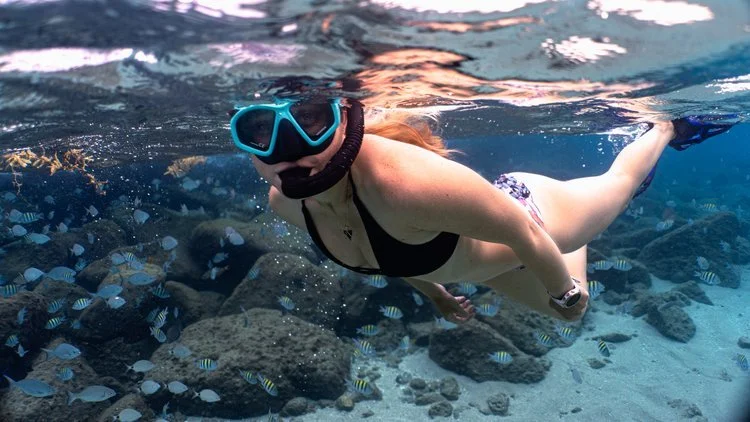
Thank you for reading this article. For more awesome freediving gear, check out Florida based manufacturer Neritic Diving. If you have any questions about freediving gear feel free to shoot us an email! [email protected]

